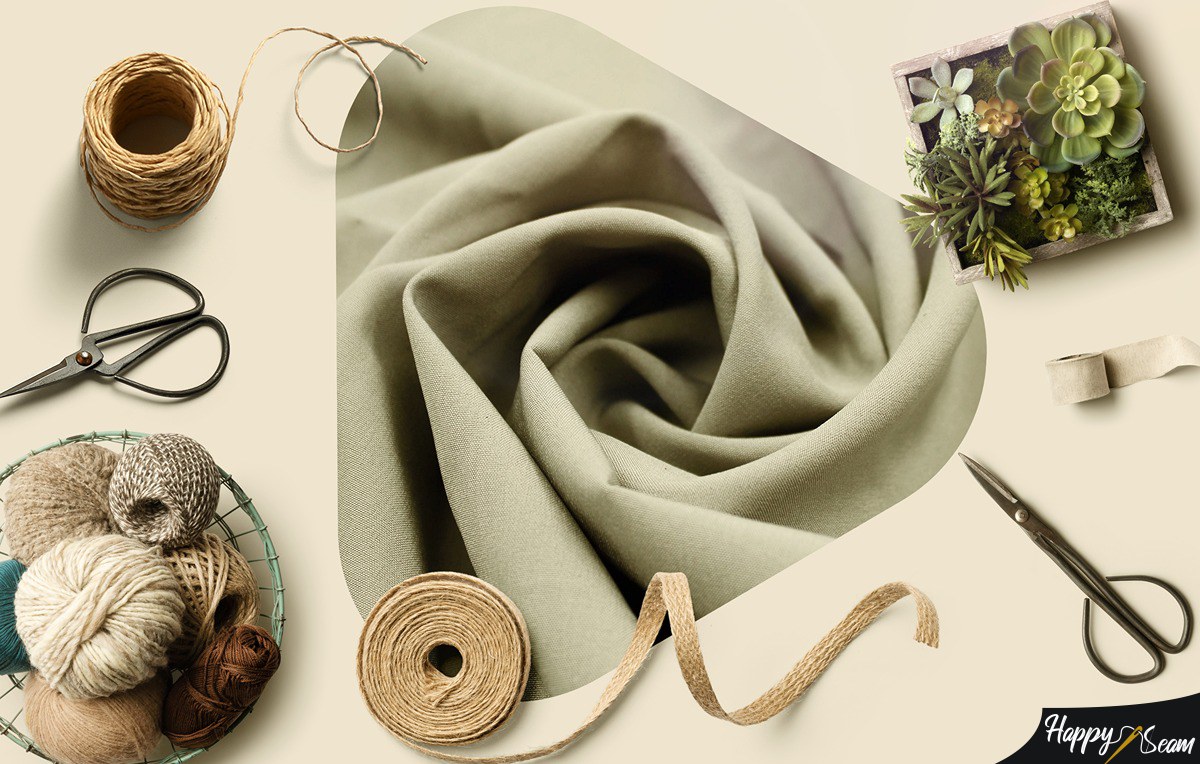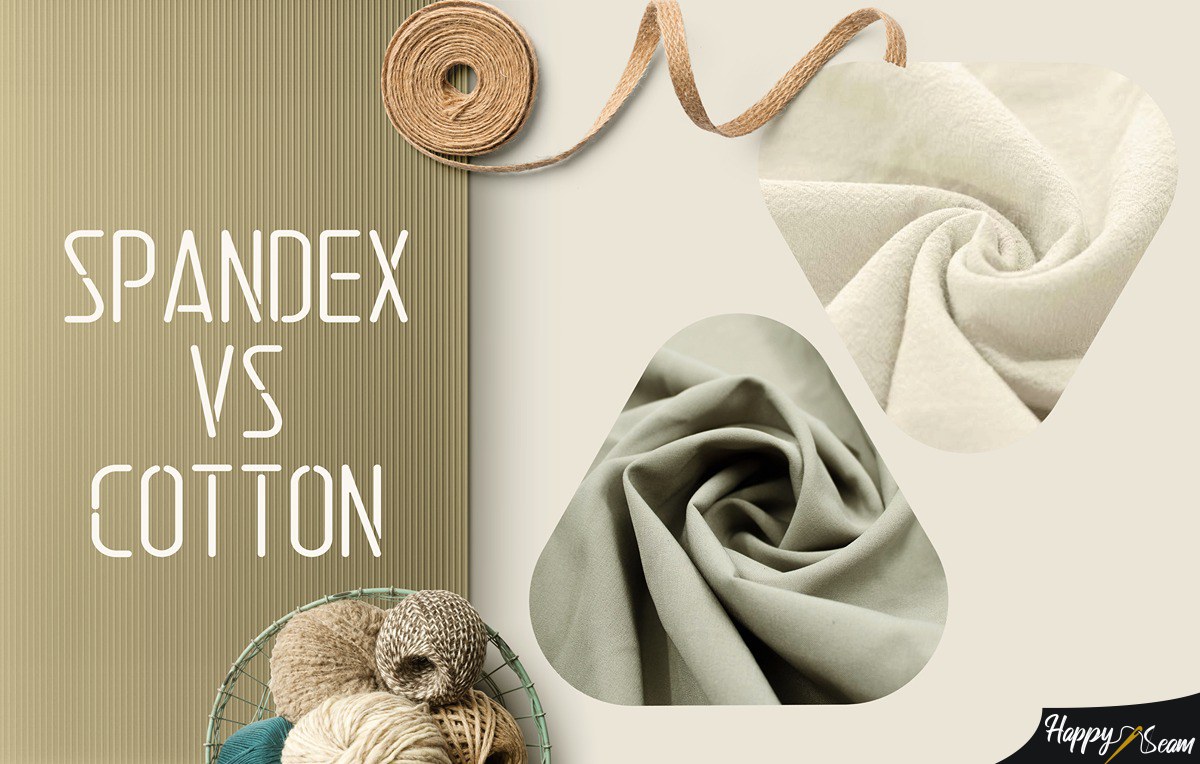Have you ever wondered which of these two fabrics is better? Or perhaps what differentiates one from the other?
If your answer is yes, know you’re not the only one who has struggled to figure that out. We’ve all been there and the reason for that is simple: Spandex and cotton are one of the most commonly used fabrics in the making of clothes, including other fabrics and home décor items.
But fortunately, there’s a way you can avoid facing such dilemmas again in the future, and that is knowing what makes spandex different from cotton. So, let’s see what those differences are in this spandex vs cotton comparison article.
Key Takeaways
- Spandex and cotton are among the most commonly used fabrics in the production of various clothing items, home décor, and other fabrics.
- They differ in several ways. For example, unlike spandex, cotton is absorbent, tends to stain and wrinkle, lacks elasticity, can be ironed and dried in a dryer, and it’s a natural fiber.
- Since both spandex and cotton have many uses and have advantages and weaknesses as well, it’s difficult to say which of the two fabrics is better or more preferred.
Comparing: Spandex vs. Cotton
Since we all wear many different types of clothes and use home decor items made of spandex and cotton, I believe we all are already familiar with the basic differences between these two fabrics.
For instance, one feature that distinguishes spandex fabrics from cotton fabrics is that they’re form-fitting and don’t tend to wrinkle. However, while they can be easily washed in a washer, they shouldn’t be ironed or dried in a dryer as the material can get damaged by heat.
When it comes to cotton garments, I believe they’re the most breathable and softest type of clothes. Moreover, compared with spandex, cotton is more durable, stronger, and less likely to cause allergic reactions or any damage to the environment. It can be dried in a dryer too.
What I don’t like about cotton is that, unlike spandex, it tends to wrinkle, pill, and shrink, it lacks elasticity, and it isn’t moisture-wicking material.
However, as different as spandex and cotton may be, it’s evident that each of them has its own advantages and weaknesses. So, to avoid struggling to decide which of the two fabrics is better or of higher quality the next time you go shopping for clothes or household items, make sure you know the main features that distinguish one from the other since this will help you make the right choice.
Without further ado, let’s see what those features are:
Stain And Wrinkle Resistance

Synthetic fabrics, just like spandex, are known for being stain-resistant. Moreover, being made of polyurethane, which is a linear polymer known for its amazing elastic property, spandex is also widely known for its considerable wrinkle resistance. So, if ironing is one of your least enjoyable household chores, now you know what type of clothes you should buy.
On the other hand, not only does cotton tend to wrinkle, but it also stains easily thanks to its high absorbency. However, the good thing is that if you ever find a “pit”, oil, or water stains on your favorite cotton T-shirt or you notice yellowness on it, you can easily remove them by washing the garment in a washing machine, or even rubbing the stain with a cloth dabbed in dish detergent or vinegar.
Elastic Property
As I already said, spandex is a well-known fabric for its amazing elastic property. This feature allows it (as well as other fabrics containing spandex) to restore its original shape and size rather than deform or get saggy regardless of how many times it’s been stretched.
On the other hand, being a natural fiber, cotton lacks elasticity. If you pull it more tightly, the yarn can easily break. This lack of elasticity also makes this type of fabric prone to `wrinkling and deforming.
Application
Thanks to its stretch property, spandex is used for manufacturing any type of garment or fabric that requires elasticity.
This fabric is very commonly used for making sportswear, swimsuits, socks, tights, leggings, and undergarments due to being non-absorbent as well as its moisture-wicking properties and stretchiness.
Additionally, although this material is typically combined with other fabrics, like polyester and cotton, in the production of clothes, you can also find some form-fitting clothing items available on the market made only of pure spandex.
Similarly, being a natural fiber, it’s no wonder that cotton is also among the most commonly used fabrics in the production of different clothing items, towels, pillows, bedding, curtains, and other fabrics, like denim, velvet, or canvas.
Absorbency
Spandex fabric doesn’t absorb sweat, oils, or water. This feature is the reason why this type of fabric is stain-resistant and great for using it in the production of activewear.
Additionally, spandex is known for being a moisture-wicking fabric, which means it eliminates moisture from your skin by dragging it to its surface where it vaporizes. So, if you’ve ever wondered why your leggings or cycling shorts keep your body dry no matter how much you sweat, now you know why this is so.
On the other hand, cotton takes in moisture, be it sweat, water, oils, or dye, which is why cotton garments are not the best type of clothing to wear when running, cycling, working out, or doing any activity that can make you sweat.
Further, unlike spandex, this fabric doesn’t belong to the group of moisture-wicking fabrics, which is why it takes it longer to dry and becomes heavy once it soaks up moisture.
Laundering

Spandex can be safely washed in a washing machine, but it shouldn’t be dried in a dryer, ironed, or dry-cleaned as it can’t withstand heat, meaning if it gets exposed to great heat, it can easily get damaged.
I’d also like to emphasize that compared to cotton, spandex dries faster, which is why it’s one of the most commonly used materials for making activewear, cycling shorts, and swimwear.
When it comes to cotton, it can be laundered too. However, it has two weaknesses – it tends to shrink when exposed to heat and loses dye every time it is laundered. So, to prevent this, make sure you wash all of your light-colored cotton garments in cold or lukewarm water and the darker ones only in cold water.
However, unlike spandex, you can iron cotton clothing items on the condition that you use steam or pre-moisten them. You can also dry cotton fabrics in a dryer since the majority of them are sold pre-shrunk. But to be on the safe side, make sure you always read the instructions on the label of the cotton fabric or clothing item before you toss it in the washer or dryer.
Final Verdict
Well, that’s about it. As you can see each of the two fabrics is unique in its own way. Each of them has advantages and drawbacks and is made in different ways too. That’s why it’s hard for me to say which of the two fabrics is better or more preferred by textile manufacturers or customers.
So, I guess that it’s up to you to choose the winner of this article and I hope that the differences between spandex and cotton I have presented above will help you make the right choice.
Sewing is definitely one of my biggest hobbies. I’ve been doing it since i was young, thanks to my mother. I specialize in sewing, and that’s what i mostly write about.



